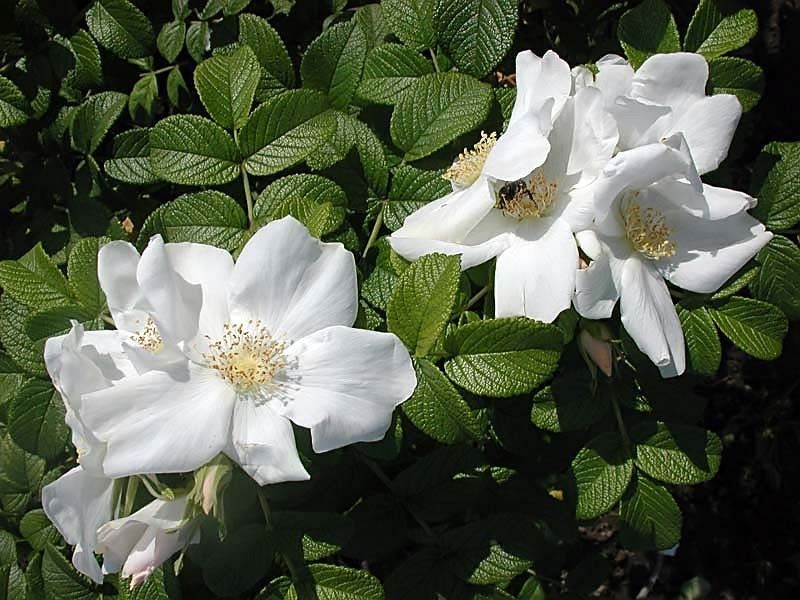Rugosa Alba rose

The Majestic Rugosa Alba Rose: A Timeless Garden Treasure
The Rugosa Alba rose, a cherished species native to Japan and Northeast Asia, is renowned for its pure white, fragrant blooms and large, decorative hips. Introduced in Australia by C. F. Newman and Sons – Adelaide in 1894.
Critical Characteristics of Rugosa Alba Rose
- Name: Rugosa Alba Rose
- Flower Color: White
- Flowering: Repeat flowering
- Fragrance: Strong, Old Rose scent
- Bloom Size: Medium
- Family: Rugosa Rose
- Size: Huge shrub (Height: 150-215 cm, Width: up to 185 cm)
- Year of Introduction: 1899
- Ideal For: Mixed borders, rose hedges, shady areas, attracting bees, producing rose hips, wild places.
Stunning Blooms and Fragrance
The Rugosa Alba rose is celebrated for its silky, pure white flowers with golden stamens, measuring approximately 4 inches in diameter. These single blooms, composed of 5 petals, exude a strong Old Rose fragrance that delights the senses. The flowers bloom in clusters, creating a striking visual impact in the garden. As a repeat bloomer, Rugosa Alba offers a continuous display of beauty throughout the growing season.
Decorative Hips and Seasonal Foliage
Following the blooms, Rugosa Alba produces huge, orange-red hips that add ornamental value to the shrub. These hips ripen in tandem with the last of their blooms, providing a vibrant contrast against the white flowers. In autumn, Rugosa Alba’s foliage turns a brilliant yellow, enhancing its visual appeal. The large, matte, light green leaves have a wrinkled (rugose) texture, further distinguishing this rose.
Growth Habit and Uses
Rugosa Alba forms a vigorous, spreading shrub that can reach heights of 150 to 215 cm and widths of up to 185 cm. This robust growth habit makes it an excellent choice for various garden applications, including:
- Mixed Borders: Adds height and structure to mixed plantings.
- Rose Hedges: Creates attractive and fragrant natural barriers.
- Shady Areas: Thrives in partial sunlight, making it suitable for less sunny spots.
- Attracting Bees: The fragrant blooms attract pollinators, supporting garden biodiversity.
